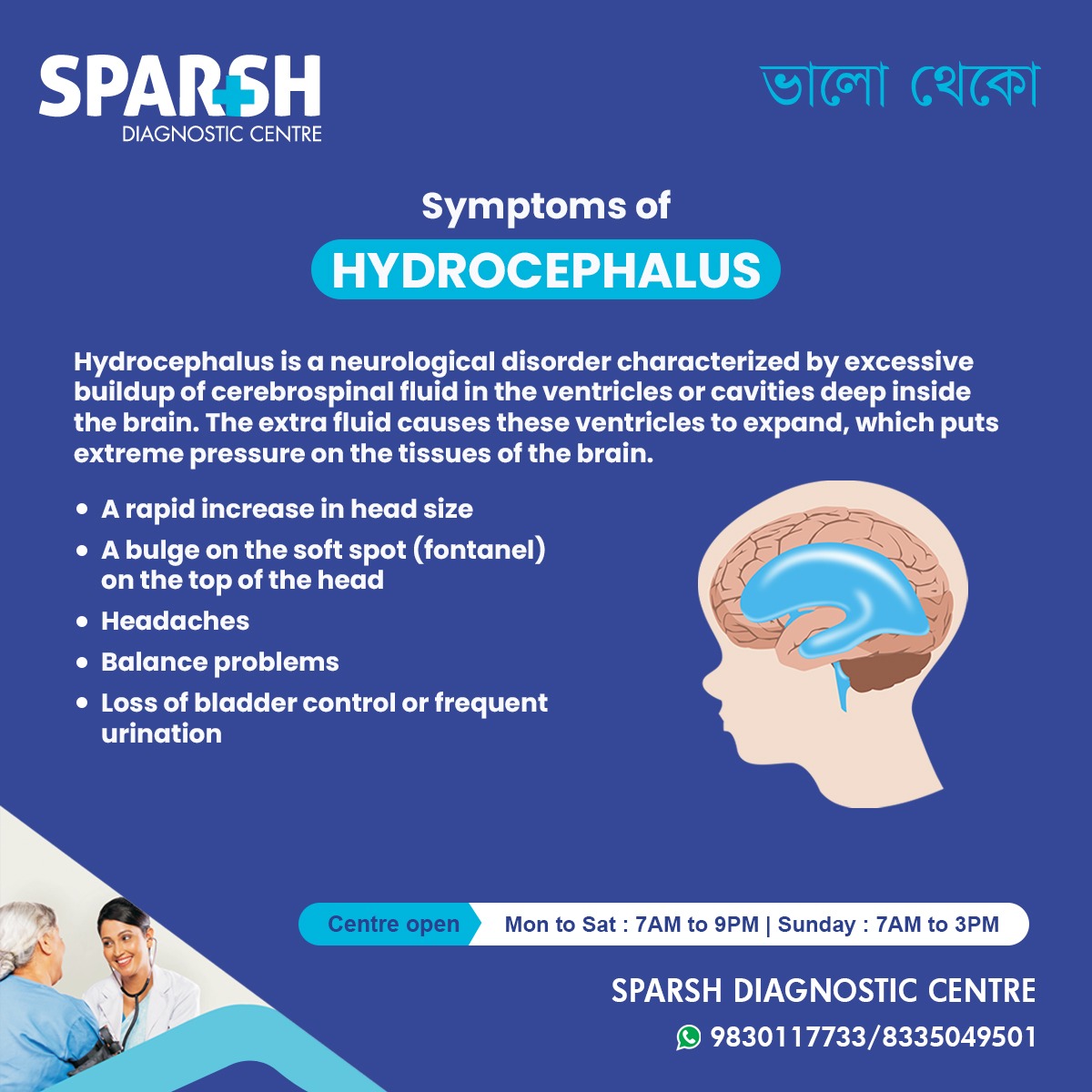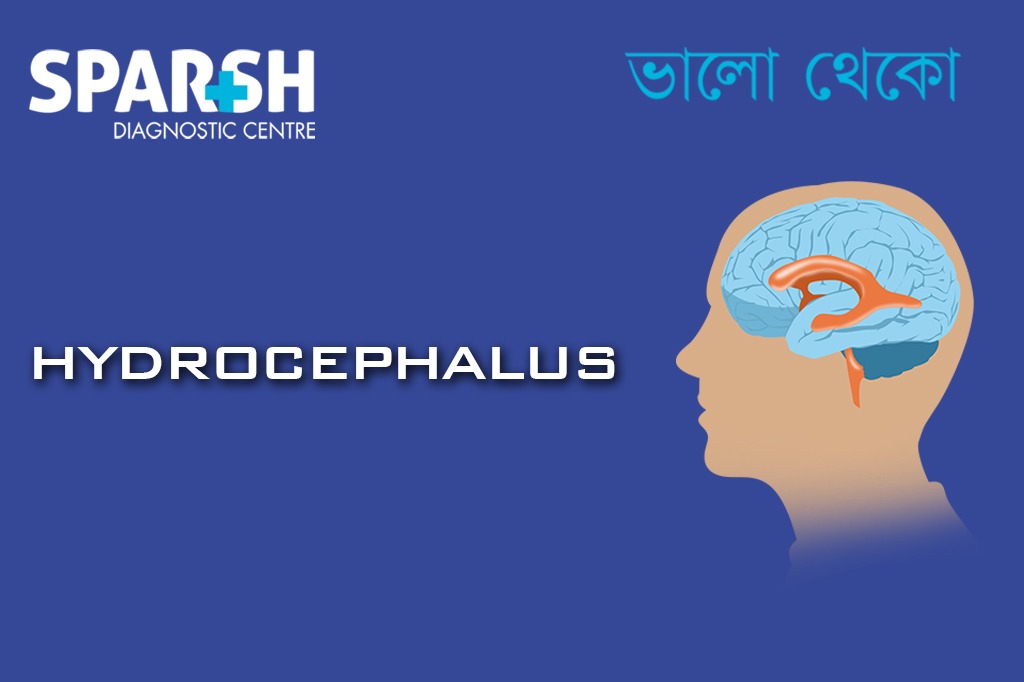Hydrocephalus is a serious neurological disorder that occurs when excess cerebrospinal fluid (CSF) accumulates within the ventricles or cavities of the brain. This buildup of fluid increases pressure inside the skull, potentially causing damage to brain tissues and affecting normal brain function.
The term “hydrocephalus” literally means “water on the brain,” but the “water” in this context refers to cerebrospinal fluid—a clear liquid that surrounds and cushions the brain and spinal cord.
Hydrocephalus can affect individuals of all ages, from newborns to older adults. However, it is most common in infants and the elderly. Early detection and treatment are crucial to prevent long-term neurological complications.
Understanding Hydrocephalus
Cerebrospinal fluid (CSF) serves several essential functions:
It cushions the brain from injury.
It removes waste products.
It maintains proper pressure within the brain and spinal canal.
Normally, CSF flows continuously through the ventricles and around the brain and spinal cord before being absorbed into the bloodstream. In hydrocephalus, this balance is disrupted — either due to overproduction, blockage, or poor absorption of CSF — leading to fluid buildup and increased intracranial pressure.

Types of Hydrocephalus
Hydrocephalus is classified into different types depending on its cause and mechanism:
1. Communicating Hydrocephalus
In this type, CSF can still flow between the ventricles, but its absorption into the bloodstream is impaired. This can result from infections, bleeding, or inflammation of brain tissues.
2. Non-Communicating (Obstructive) Hydrocephalus
Here, a blockage within the ventricular system prevents CSF from flowing freely. Common causes include congenital malformations, tumors, or cysts.
3. Congenital Hydrocephalus
Present at birth, congenital hydrocephalus may be caused by genetic factors or developmental disorders such as spina bifida or aqueductal stenosis.
4. Acquired Hydrocephalus
This form develops after birth due to injury, infection (like meningitis), brain hemorrhage, or tumors.
5. Normal Pressure Hydrocephalus (NPH)
This type typically affects older adults. Despite normal CSF pressure levels, fluid accumulates, leading to symptoms such as walking difficulties, memory problems, and urinary incontinence.
Causes of Hydrocephalus
Hydrocephalus can occur due to various underlying conditions, including:
Congenital defects: Developmental abnormalities of the brain or spinal cord.
Infections: Meningitis, encephalitis, or other brain infections.
Brain tumors or cysts: Obstruction of CSF pathways.
Head injury: Trauma that disrupts normal fluid circulation.
Subarachnoid hemorrhage: Bleeding in the space around the brain.
Complications of premature birth: Intraventricular hemorrhage can interfere with CSF flow.
Symptoms of Hydrocephalus
The symptoms vary depending on age, type, and severity of the condition. The Sparsh Diagnostic Centre infographic highlights key signs to watch for.
In Infants:
A rapid increase in head size
A bulge on the soft spot (fontanel)
Vomiting and poor feeding
Downward deviation of eyes (“sunsetting” eyes)
Irritability and sleepiness
In Older Children and Adults:
Balance and coordination problems
Memory and concentration issues
Loss of bladder control or frequent urination
Difficulty walking (especially in normal pressure hydrocephalus)
Complications of Hydrocephalus
If left untreated, hydrocephalus can lead to serious complications, including:
Developmental delays or intellectual disability in children
Vision problems
Seizures
Loss of mobility or motor coordination
Permanent brain damage
Coma or death (in severe, untreated cases)
Early medical evaluation is critical to prevent irreversible neurological damage.
Diagnosis of Hydrocephalus
At Sparsh Diagnostic Centre, modern neuroimaging and diagnostic technologies help in the early and accurate detection of hydrocephalus.
1. Physical and Neurological Examination
The doctor will assess symptoms, head size (in infants), reflexes, and eye movements.
2. Imaging Tests
Ultrasound: Safe and effective for diagnosing hydrocephalus in infants before the fontanels close.
CT Scan (Computed Tomography): Detects enlarged ventricles and helps identify the cause of obstruction.
MRI (Magnetic Resonance Imaging): Provides detailed images of brain tissues and fluid pathways.
Intracranial Pressure Monitoring: Measures the pressure inside the skull to confirm diagnosis.
Early imaging plays a crucial role in determining the underlying cause and appropriate treatment plan.
Treatment Options for Hydrocephalus
While hydrocephalus cannot always be cured, it can be effectively managed with medical and surgical interventions.
1. Shunt System
The most common treatment involves surgically inserting a shunt, a flexible tube that drains excess CSF from the brain to another part of the body (often the abdomen), where it can be absorbed naturally.
There are two main types:
Ventriculoperitoneal (VP) shunt – drains fluid to the abdomen.
Ventriculoatrial (VA) shunt – drains fluid to the heart.
Regular monitoring is necessary as shunts can malfunction or become infected.
2. Endoscopic Third Ventriculostomy (ETV)
In this minimally invasive procedure, a neurosurgeon creates a small opening in the floor of the third ventricle to allow CSF to bypass the obstruction and flow freely. This technique is especially effective for non-communicating hydrocephalus.
3. Medication
In certain cases, medications may temporarily reduce CSF production, though they are rarely a long-term solution.
Living with Hydrocephalus
With timely treatment, many individuals with hydrocephalus lead healthy lives. Regular follow-ups are crucial to monitor shunt function, neurological health, and developmental progress (especially in children).
Tips for Managing Hydrocephalus
Schedule routine medical checkups and imaging tests.
Watch for signs of shunt malfunction such as vomiting, headache, or drowsiness.
Maintain good hygiene to prevent infections.
Support physical and occupational therapy for developmental improvement.
Seek prompt medical help if symptoms recur.
Prevention and Early Detection
While hydrocephalus cannot always be prevented, certain measures can help reduce the risk:
Prenatal care: Regular ultrasounds can detect brain abnormalities early.
Protect the head: Always use helmets and seat belts to prevent injuries.
Prevent infections: Timely treatment of meningitis or encephalitis.
Monitor premature infants: Early screening for intraventricular hemorrhage.
At Sparsh Diagnostic Centre, advanced diagnostic imaging and expert neurologists ensure comprehensive evaluation and care for patients with hydrocephalus and related neurological conditions.
Prognosis
The outcome for hydrocephalus depends on several factors — the cause, age at diagnosis, and timeliness of treatment.
Children treated early often develop normally with appropriate follow-up care. Adults with normal pressure hydrocephalus can also experience significant improvement in mobility and cognition after surgery.
However, untreated hydrocephalus can cause permanent brain injury and disability, highlighting the importance of early diagnosis and management.
When to See a Doctor
Seek immediate medical attention if you or your child experience:
Unexplained rapid head growth (in infants)
Severe or persistent headaches
Nausea, vomiting, or blurred vision
Problems with walking or balance
Sudden changes in bladder control
Confusion or memory loss
Prompt evaluation can prevent complications and improve long-term outcomes.
Why Choose Sparsh Diagnostic Centre for Hydrocephalus Evaluation
At Sparsh Diagnostic Centre, we combine advanced imaging technology with compassionate patient care.
Our specialists are skilled in detecting and monitoring neurological disorders like hydrocephalus through:
High-resolution imaging
Comprehensive neurological assessments
Collaborative care with neurosurgeons and neurologists
We are dedicated to accurate diagnosis, timely intervention, and continuous patient support.
Frequently Asked Questions (FAQ) on Hydrocephalus
1. What causes hydrocephalus in babies?
Hydrocephalus in infants is often caused by congenital brain malformations, infections before birth, or bleeding within the brain’s ventricles (common in premature babies).
2. Can hydrocephalus be cured?
While there’s no permanent cure, it can be effectively managed with surgical procedures like shunt placement or endoscopic third ventriculostomy (ETV).
3. Is hydrocephalus life-threatening?
If untreated, it can lead to severe brain damage or death. However, with early diagnosis and proper treatment, most people live normal lives.
4. What are the early warning signs of hydrocephalus in adults?
Common signs include headaches, walking difficulties, memory issues, and loss of bladder control—especially in cases of normal pressure hydrocephalus.
5. Can hydrocephalus develop later in life?
Yes. It can occur after head injury, infection, stroke, or brain tumor, and is known as acquired hydrocephalus.
6. How long does a shunt last?
A shunt can last many years but may require periodic replacement due to blockage, infection, or malfunction.
7. Is hydrocephalus hereditary?
Some congenital cases have a genetic component, but most occur sporadically without inheritance.
8. Can hydrocephalus affect mental development?
If not treated promptly, hydrocephalus can impair cognitive and physical development. Early treatment often prevents long-term damage.
9. How is hydrocephalus diagnosed in newborns?
Through head ultrasound, CT scan, or MRI, along with physical examination to measure head size and check fontanel (soft spot) tension.
10. What is the recovery like after shunt surgery?
Recovery is usually quick, though patients need regular follow-up visits to monitor shunt function and prevent complications.
Hydrocephalus is a manageable neurological condition, but timely diagnosis and treatment are essential to prevent brain damage and improve quality of life.
At Sparsh Diagnostic Centre, our goal is to ensure early detection, precise imaging, and coordinated care to help patients live healthier, fuller lives.
If you or your loved one experiences symptoms of hydrocephalus, don’t delay — book a consultation today.
📍 Visit: Sparsh Diagnostic Centre
📞 Contact: 9830117733 / 8335049501
🕒 Centre Hours: Mon–Sat: 7 AM to 9 PM | Sunday: 7 AM to 3 PM
#BhaloTheko
Disclaimer:
No content on this site, regardless of date, should ever be used as a substitute for direct medical advice from your doctor or other qualified clinician.

![]()






[…] Hydrocephalus (fluid accumulation in the brain) […]
[…] Hydrocephalus: Excess cerebrospinal fluid within the ventricles leading to pressure buildup. […]
[…] on its severity, spina bifida can cause mobility issues, bladder or bowel dysfunction, hydrocephalus, and learning […]